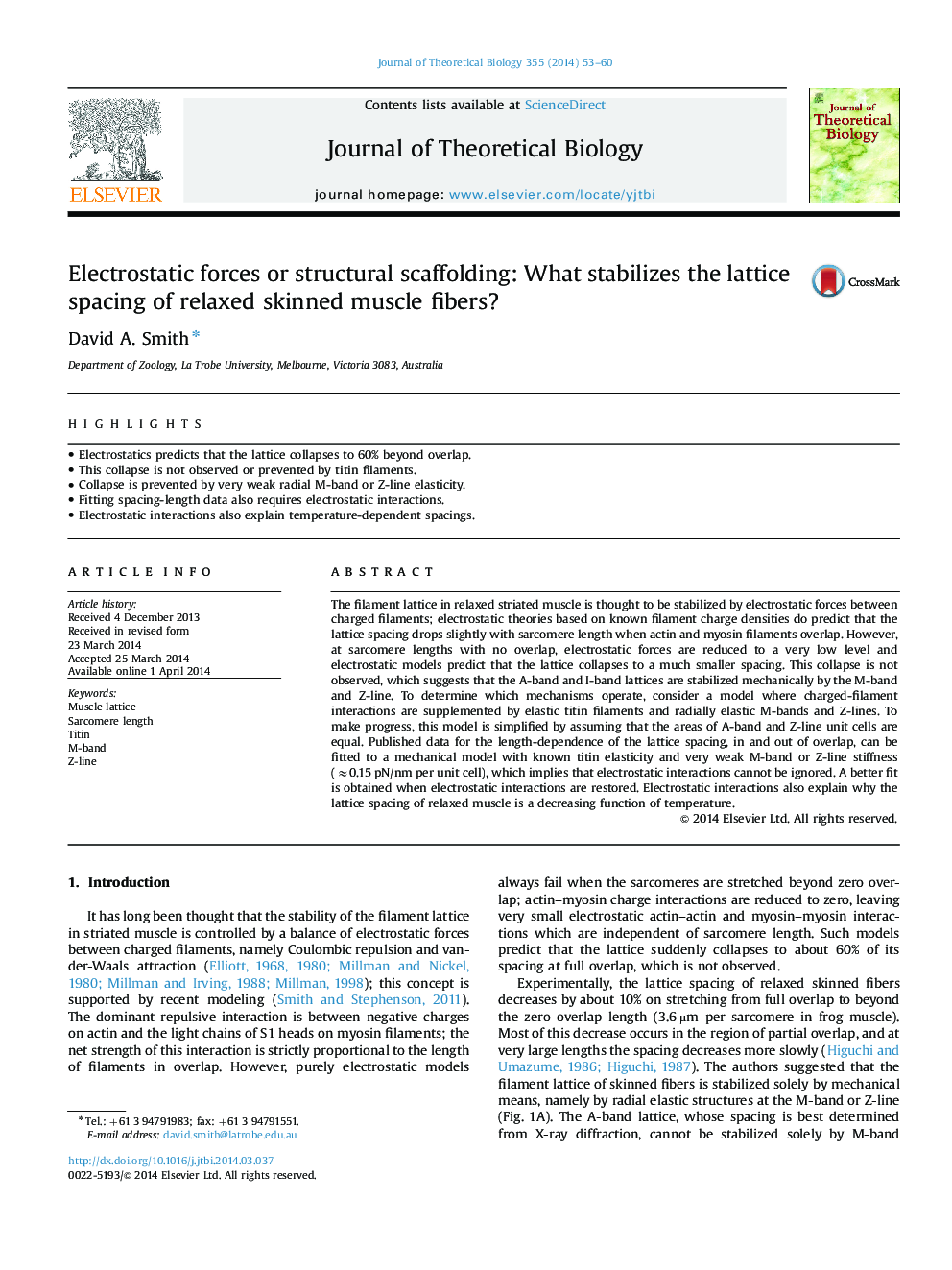| کد مقاله | کد نشریه | سال انتشار | مقاله انگلیسی | نسخه تمام متن |
|---|---|---|---|---|
| 6370472 | 1623855 | 2014 | 8 صفحه PDF | دانلود رایگان |
- Electrostatics predicts that the lattice collapses to 60% beyond overlap.
- This collapse is not observed or prevented by titin filaments.
- Collapse is prevented by very weak radial M-band or Z-line elasticity.
- Fitting spacing-length data also requires electrostatic interactions.
- Electrostatic interactions also explain temperature-dependent spacings.
The filament lattice in relaxed striated muscle is thought to be stabilized by electrostatic forces between charged filaments; electrostatic theories based on known filament charge densities do predict that the lattice spacing drops slightly with sarcomere length when actin and myosin filaments overlap. However, at sarcomere lengths with no overlap, electrostatic forces are reduced to a very low level and electrostatic models predict that the lattice collapses to a much smaller spacing. This collapse is not observed, which suggests that the A-band and I-band lattices are stabilized mechanically by the M-band and Z-line. To determine which mechanisms operate, consider a model where charged-filament interactions are supplemented by elastic titin filaments and radially elastic M-bands and Z-lines. To make progress, this model is simplified by assuming that the areas of A-band and Z-line unit cells are equal. Published data for the length-dependence of the lattice spacing, in and out of overlap, can be fitted to a mechanical model with known titin elasticity and very weak M-band or Z-line stiffness (â0.15Â pN/nm per unit cell), which implies that electrostatic interactions cannot be ignored. A better fit is obtained when electrostatic interactions are restored. Electrostatic interactions also explain why the lattice spacing of relaxed muscle is a decreasing function of temperature.
Journal: Journal of Theoretical Biology - Volume 355, 21 August 2014, Pages 53-60
